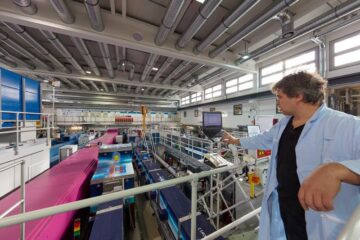Phosphate Binder for the Treatment of Hyperphosphatemia

<strong>Background</strong><br>
Hyperphosphatemia is a complication of chronic kidney disease. Patients with renal insufficiency have an abnormal phosphate metabolism that leads to an elevated concentration of phosphate in the blood. In conjunction with calcium imbalance, hyperphosphatemia increases the risk of cardiovascular disease in patients with renal failure. Hyperphosphatemia promotes arterial calcification which increases the risk of myocardial infarction and is therefore a big risk factor for cardiovascular mortality in dialysis patients. Due to the problems of current phosphate binders like poor taste, halitosis, gastro-intestinal complaints and high cost, there is a great demand for novel phosphate binders.<br><br> <strong>Technology</strong><br> We offer a phosphate binder on the basis of maghemite or maghemite/ magnetite. The novel phosphate binder comprises an iron oxide core being coated with carbohydrates e.g. sugar molecules like mannose or fructan. The iron oxide core is less than 20 nm in diameter and shows an inverse spinel structure, which offers a high phosphate binding capacity. <br><br> <strong>Benefits</strong> <ul> <li>Highly improved phosphate binding capacity</li> <li>Well tolerated oral phosphate binder</li> <li>No known side effects</li> <li>Low manufacturing costs</li> <li>Easy to manufacture </li> </ul> <p><strong>IP Rights</strong><br> DE, US patent application (09/2011)<br> PCT patent application <br> <br> <strong>Patent Owner</strong><br> Charité Universitätsmedizin Berlin</p>
Weitere Informationen: PDF
ipal GmbH
Tel.: +49 (0)30/2125-4820
Ansprechpartner
Dr. Dirk Dantz
Media Contact
Alle Nachrichten aus der Kategorie: Technologieangebote
Neueste Beiträge

Bakterien für klimaneutrale Chemikalien der Zukunft
Forschende an der ETH Zürich haben Bakterien im Labor so herangezüchtet, dass sie Methanol effizient verwerten können. Jetzt lässt sich der Stoffwechsel dieser Bakterien anzapfen, um wertvolle Produkte herzustellen, die…

Batterien: Heute die Materialien von morgen modellieren
Welche Faktoren bestimmen, wie schnell sich eine Batterie laden lässt? Dieser und weiteren Fragen gehen Forschende am Karlsruher Institut für Technologie (KIT) mit computergestützten Simulationen nach. Mikrostrukturmodelle tragen dazu bei,…

Porosität von Sedimentgestein mit Neutronen untersucht
Forschung am FRM II zu geologischen Lagerstätten. Dauerhafte unterirdische Lagerung von CO2 Poren so klein wie Bakterien Porenmessung mit Neutronen auf den Nanometer genau Ob Sedimentgesteine fossile Kohlenwasserstoffe speichern können…

















